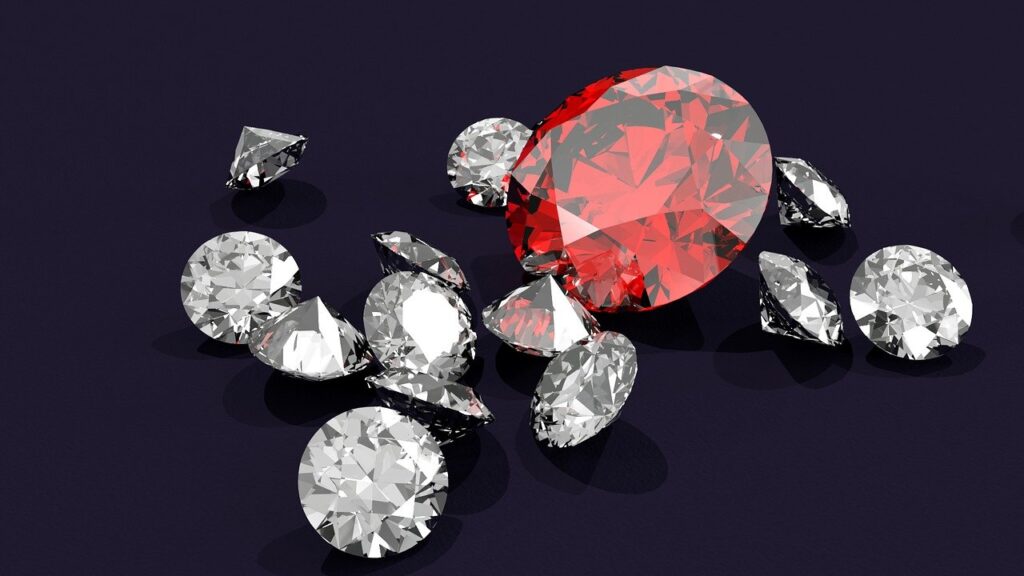In an article from BBC Future in early 2020 they cover a story on diamonds. This was particularly interesting because we are not talking about the centuries-old stone from the earth, but the sparkling stone of the future because, they don’t come from mines but from labs, and designed by engineers.
This is the feature of lab diamonds and how they are paving a path into future jewelry. How popular are they? And, more importantly, what are they?
Lab Diamonds
Is it possible to grow diamonds in a lab with the help of engineers and scientists? The answer, as per a chemical engineer, is an absolute yes. Because young people are slowly swaying away from diamond mining under inhuman conditions, scientists are thinking of new ways to keep the business alive, and growing. Many high-tech and international jewelry chains and brands are showing interest in this idea, and the diamond of the future.
It can take just 5 days to grow a diamond in the lab, according to a Belgium-based company Kimai. The company’s head and cofounder is Sydney Neuhaus. Antwerp is the capital of the world diamond business and the company is also based here. Today, they are available all across Europe and the UK. Because of the toll on the environment and human resource that goes into diamond extraction, the company started focusing on lab diamonds.
It turns out that nearly 70% of millennials are keen on buying these diamonds that grow in labs. They can take orders and deliver in under a week, which is also amazing for urgent situations. In short, people call them guilt-free jewelry and they are proud of it as well.
What Are Lab-Grown Diamonds?
It turns out that chemical engineers and scientists can grow diamonds in a lab under specific experimental conditions. They are more sustainable than traditional diamonds. They also take less time and effort. So, let us briefly list the points about this new type of jewelry.
- The lab diamonds are physically, chemically, and optically identical to a diamond from a mine.
- Because naturally occurring diamond is also a crystalline form result of immense pressure and heat under eater, these are natural. But, they are available with a lot of difficulties and most of them are from 1 to 3 billion years old.
- In a lab, these conditions can be recreated to grow diamonds. But, rather than miles deep inside Earth, they do it inside a machine.
- There are two ways to grow diamonds in a lab. The HPHT and CVD.
How to Grow Diamonds in a Lab?
As we mentioned above, we need to recreate similar conditions in terms of intensive pressure and temperature just like inside the earth, to grow diamonds in a lab. So, first, we discuss the HPHT method because it is more common and simpler.
In fact, the first-ever lab diamond was possible because of this technology. By using a High-Pressure High Temperature or HPHT system, seeds amidst some pure graphite carbon are exposed to intense conditions. That is, 1500C temperature and a pressure of about 0.1 million bars or 1.5 million psi, inside a chamber. The unit psi stands for pounds per square inch. But, this is also tedious and not very effective.
So, scientists found another method which they began testing recently. This is the Chemical Vapour Decomposition or CVD. In this method, the seeds go inside the same sealed chamber but now with carbon-rich gas inside it too. This is heated to 800C, because of which CVD requires less temperature/heat and lesser equipment costs. In this method, as the temperature goes to 800C, the gases begin to stick to the seed and begin growing a diamond, one atom at a time. In a short span of time, atom by atom, you have a diamond in front of you.
Where to Buy Lab Diamonds?
Now, let us take a small detour from the scene and focus on the market itself. Because lab diamonds are rapidly growing in popularity, people want to buy them more and more.
As per the AWDC report, the market is increasing at a rate of 15% to 20% each year, keeping the current rise. The annual increase means they may be soon available at stores near you. But, for now, for example, you can get lab diamonds from online startup labs and jewelry designers. As per prices a 0.70-carat lab diamond costs GBP 1560 while 0.50-carat natural diamond costs GBP 1505. Below is a list of some international makers of lab diamonds available for sale on orders.
- Lark & Berry
- Taylor & Hart
- Courbet
- Innocent Stone
Conclusion
Relative to naturally occurring diamonds, these lab diamonds are attracting young buyers and today’s millennials a lot more. The price point, transparency, and environmental reasons are far superior to the cause.

